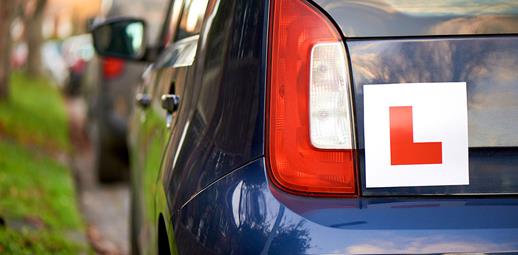
Learning to drive needs a lot of practice. In fact, most learners have 45 hours’ worth of lessons before passing their test, according to the Driver and Vehicle Standards Agency (DVSA).
But getting some hours behind the wheel with a friend or family member could help save some money on professional lessons while still building driving confidence. The savings might also come in handy when looking for a first car or arranging car insurance.
If you’re thinking of stepping up and giving lessons to somebody, there are a few things to bear in mind. Shifting to a teacher-pupil relationship is a very different dynamic and doesn’t come easily to everyone. Hopefully these tips will help you preserve a healthy relationship.
What are the legal requirements for giving a driving lesson?
To teach a family member or friend, you must be over 21, and have held a full licence for at least three years. The learner must be a provisional licence holder. And the car should display L-plates (or D-plates in Wales).
The learner must be supervised at all times while driving. If they’re caught driving unsupervised, that could mean up to 6 penalty points on their licence, and a fine of up to £1,000. For new and learner drivers, the knock-on effects could make or break their ability to drive in the future.
You should also make sure that their car insurance is in order, and that the car is taxed and has a valid MOT.
What should I do before the lesson?
For some practical tips you can employ, read this guide on how to teach your kids to drive. You may not be teaching one of your children - in fact, you might even be teaching a parent. But it still contains some handy pointers - such as how to schedule your lessons, and planning your routes.
It’s a good idea to discuss with your pupil what they’d like to learn beforehand. If they’re new to driving and aren’t sure, inform them what the lessons are going to cover. This way they’ll know what to expect.
How do I stay calm?
It’s really important to be as cool and collected as possible during a lesson. Of course, this is easier said than done. Unlike an Approved Driving Instructor (ADI), you’re unlikely to have dual pedals for a start. So, how best to remain calm?
Give your instructions in good time: if you do this, your pupil won’t feel as rushed or pressured. Try to establish a rhythm, so that they have enough time to think about and apply your instructions. Soon you’ll get into a natural flow.
Don’t raise your voice: it’s very easy to do so in stressful situations, but it won’t help either of you. Even if a situation needs urgent correcting, shouting will only add to the pressure. Be firm and succinct with your instructions to make things easier to understand.
Take a break when you need it – Driving can be stressful even with years of experience under your belt. Plan in breaks to relax and breathe, it could help both of you keep your cool.
Silence is golden
Despite the normal rapport you may have with the budding driver, it’s important to remember that you both need to focus on driving safely. As such, you should keep chit-chat to a minimum, certainly when they’re just starting out. This can be distracting and your minds need to be on the road.
The amount of silence is a good way of gauging how lessons are progressing. If you don’t have to interject with guidance or warnings frequently, it shows that they’re doing a good job.
Ask questions
When the pupil gets to a certain standard, rather than giving guidance, you’ll be able to ask them to review their own performance. You might ask what faults they think they’ve made, or how they could have handled certain situations better. This will help improve their awareness.
Know when to call it a day
If lessons just aren’t working out for you or your pupil, it’s ok to throw in the towel. This isn’t an admission of defeat, but more of an understanding of what works and what doesn’t. There’s no point dragging out something that isn’t working for longer than you have to.
Whatever your relationship, not everybody will settle easily into teacher-pupil roles. Remember, learning to drive is an important step towards independence, and should be something to enjoy. If it’s not working out, then it might be worth looking to spend some time with a professional instructor.


